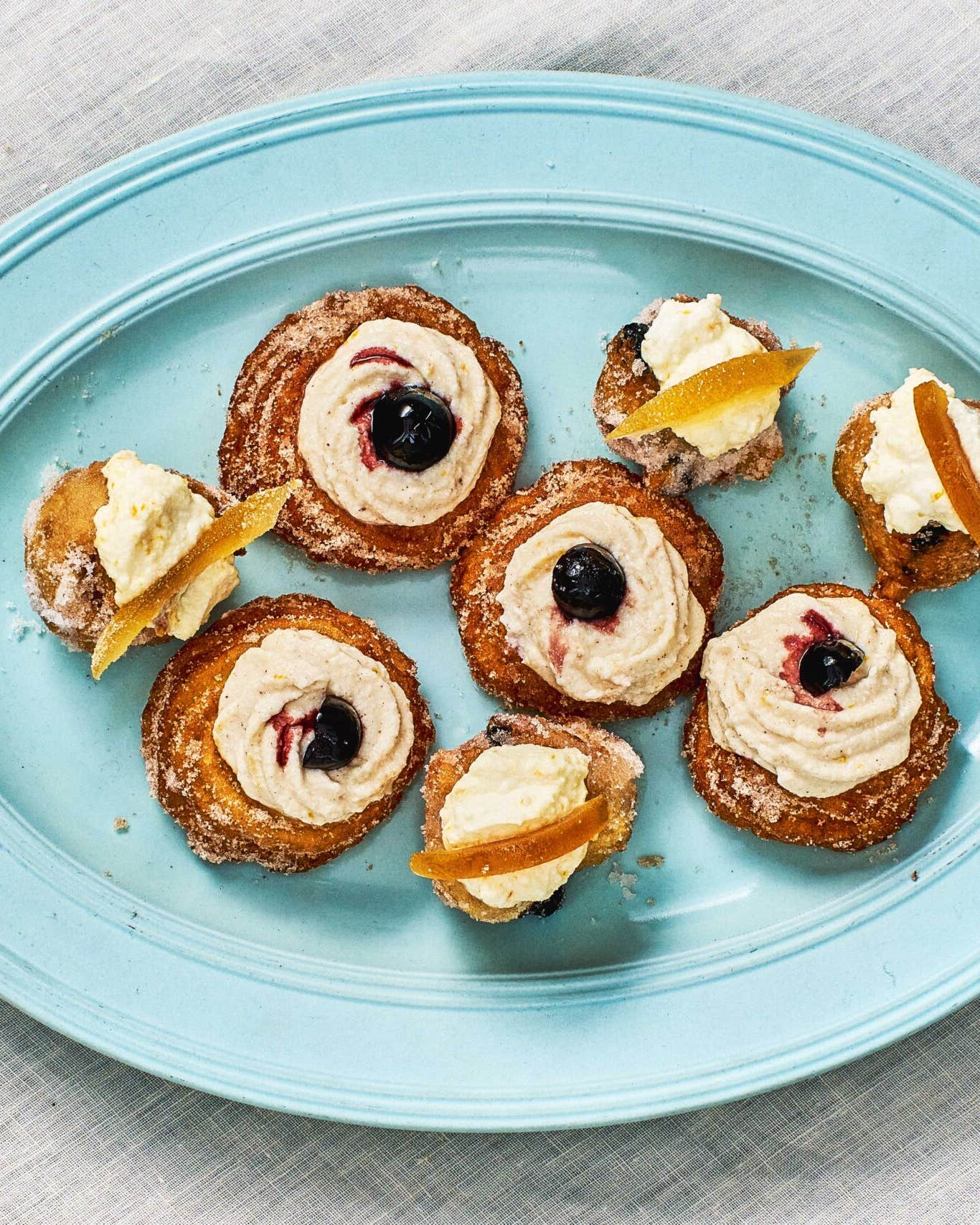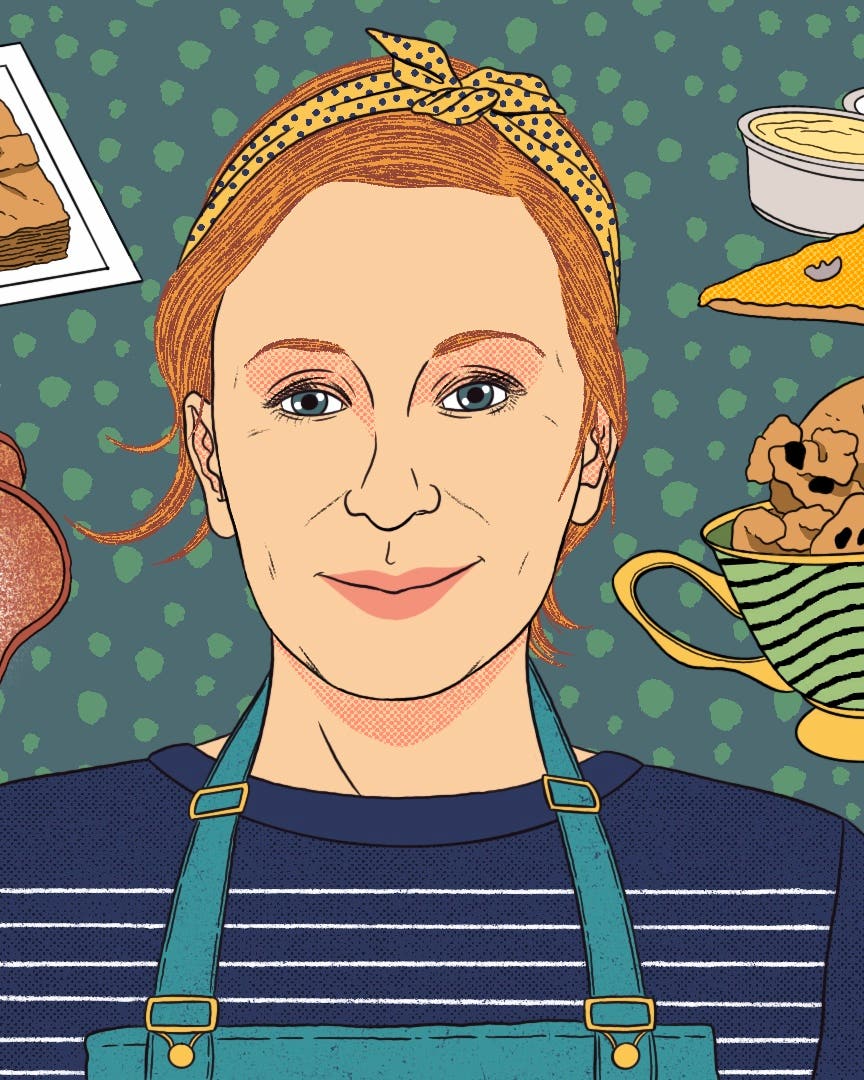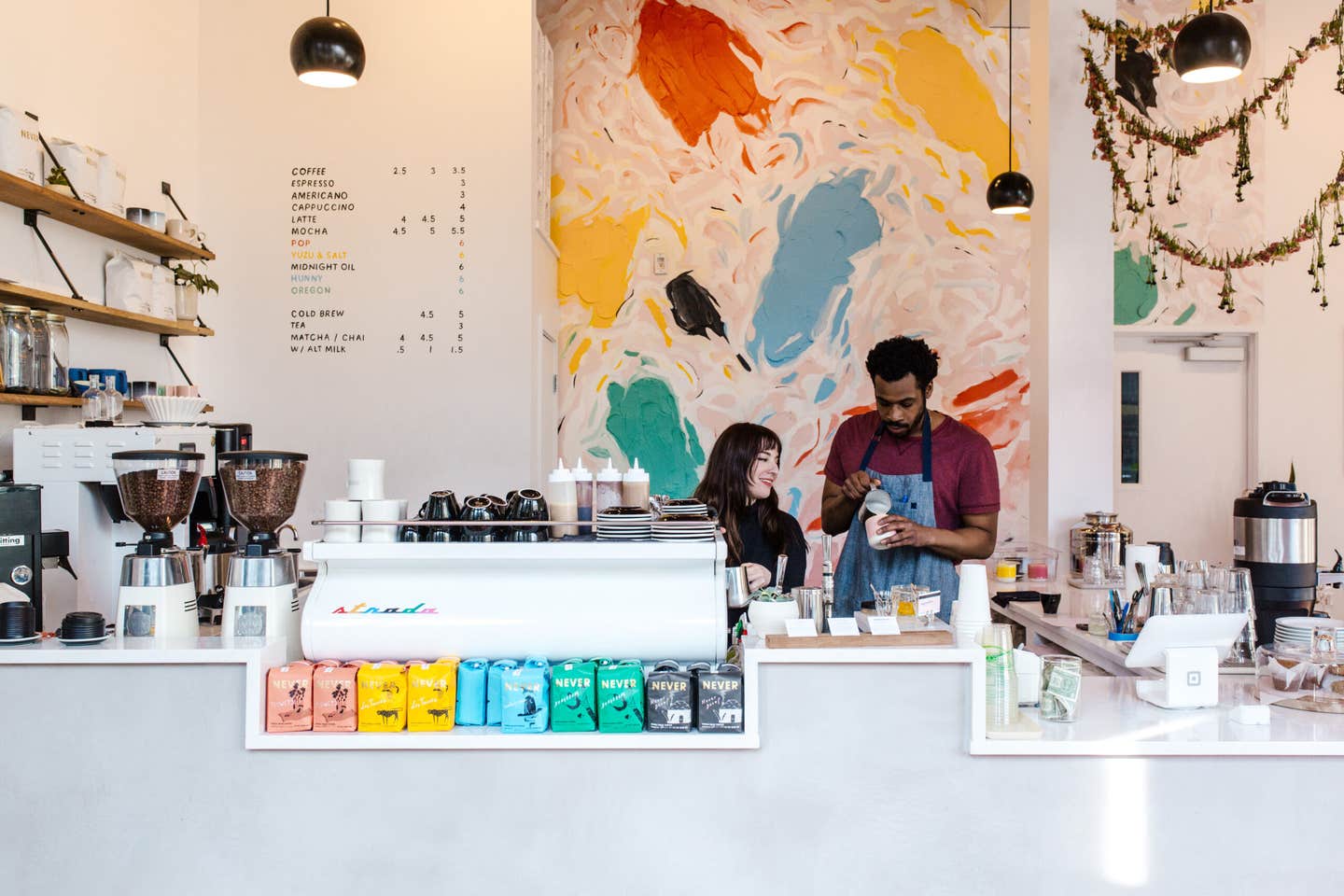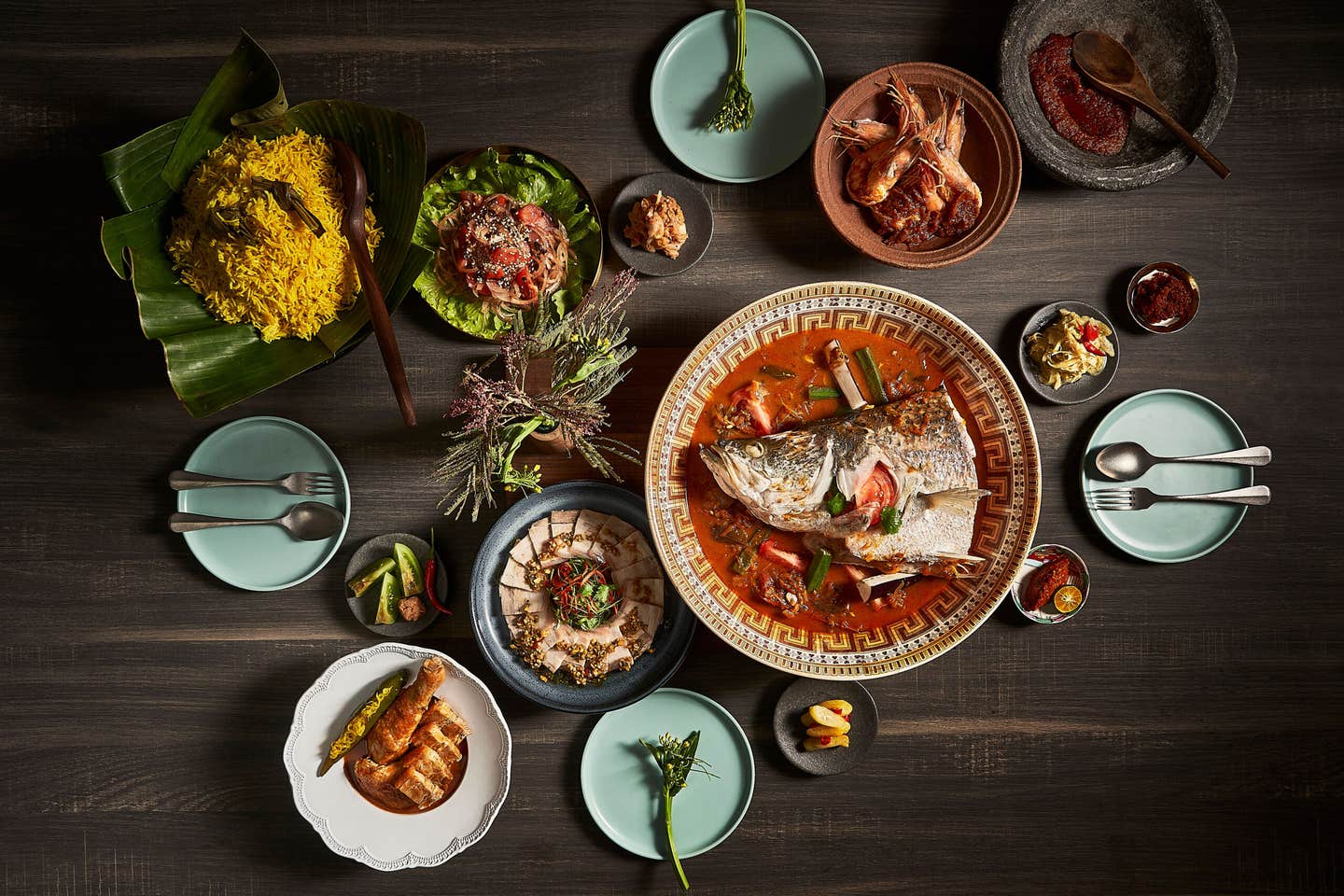
The Revival of Singapore’s Indigenous Cuisine
With flavors like turmeric, sambal, and laksa leaves, chefs are reimagining the country’s centuries-old ingredients.
The last of the day’s visitors trickle out from Singapore’s famed Botanic Gardens, leaving the footpaths that wind through the lush foliage and throngs of orchids deserted. But listen carefully and you can hear the din of dinner service emanating from within the flora. The source? Pangium, a new fine-dining restaurant that opened in June, tucked away in the heart of this 163-year-old UNESCO World Heritage Site.
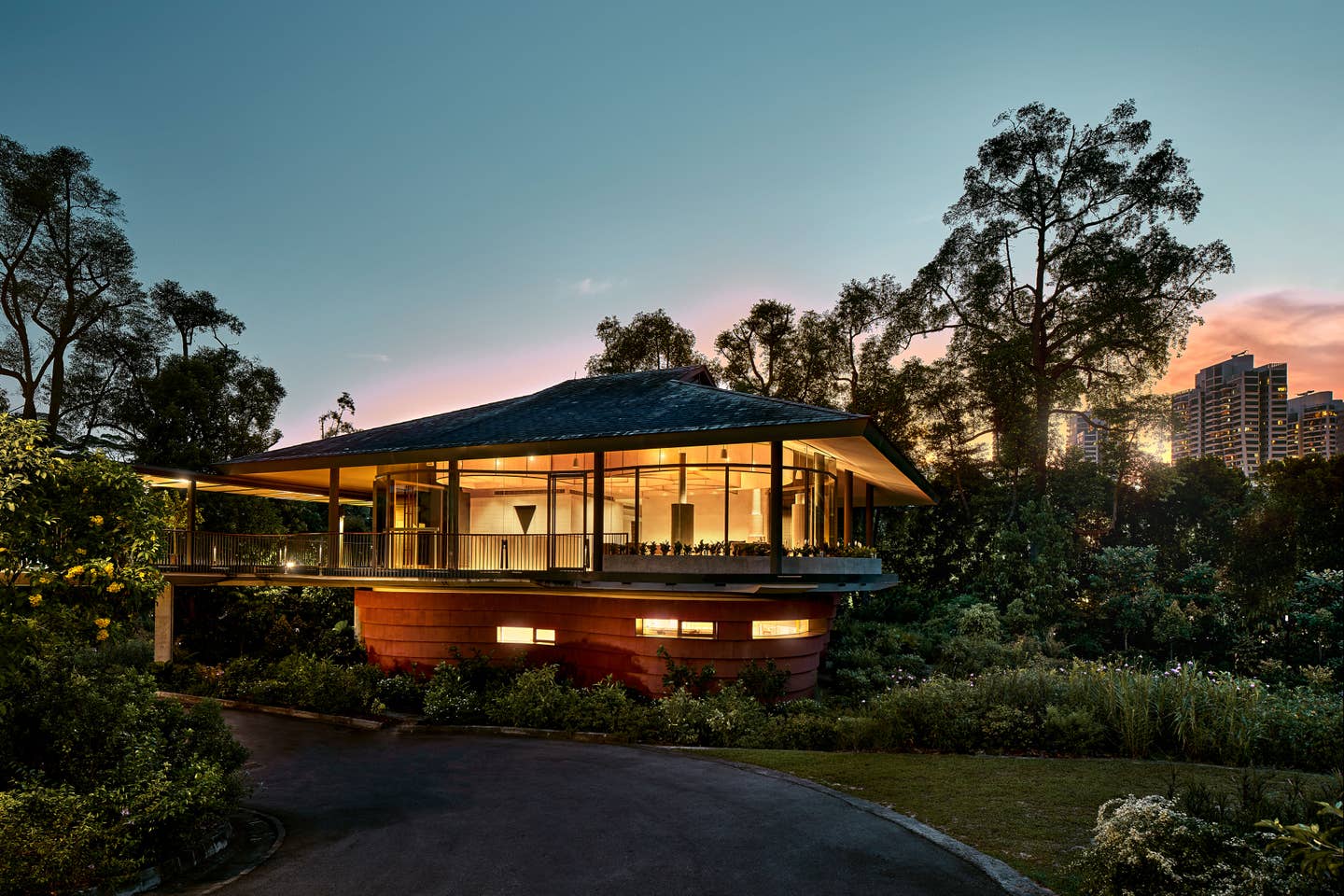
Inside, chef Malcolm Lee serves a contemporary tasting menu that spotlights heritage flavors as emblematic of the country's identity as these tropical surroundings. As a Peranakan, Lee is one of the chefs driving a revival of Singapore's indigenous cuisine and diverse heritage foods. “I’m quite a traditionalist,” says Lee. “I really liked the way things were done before.”
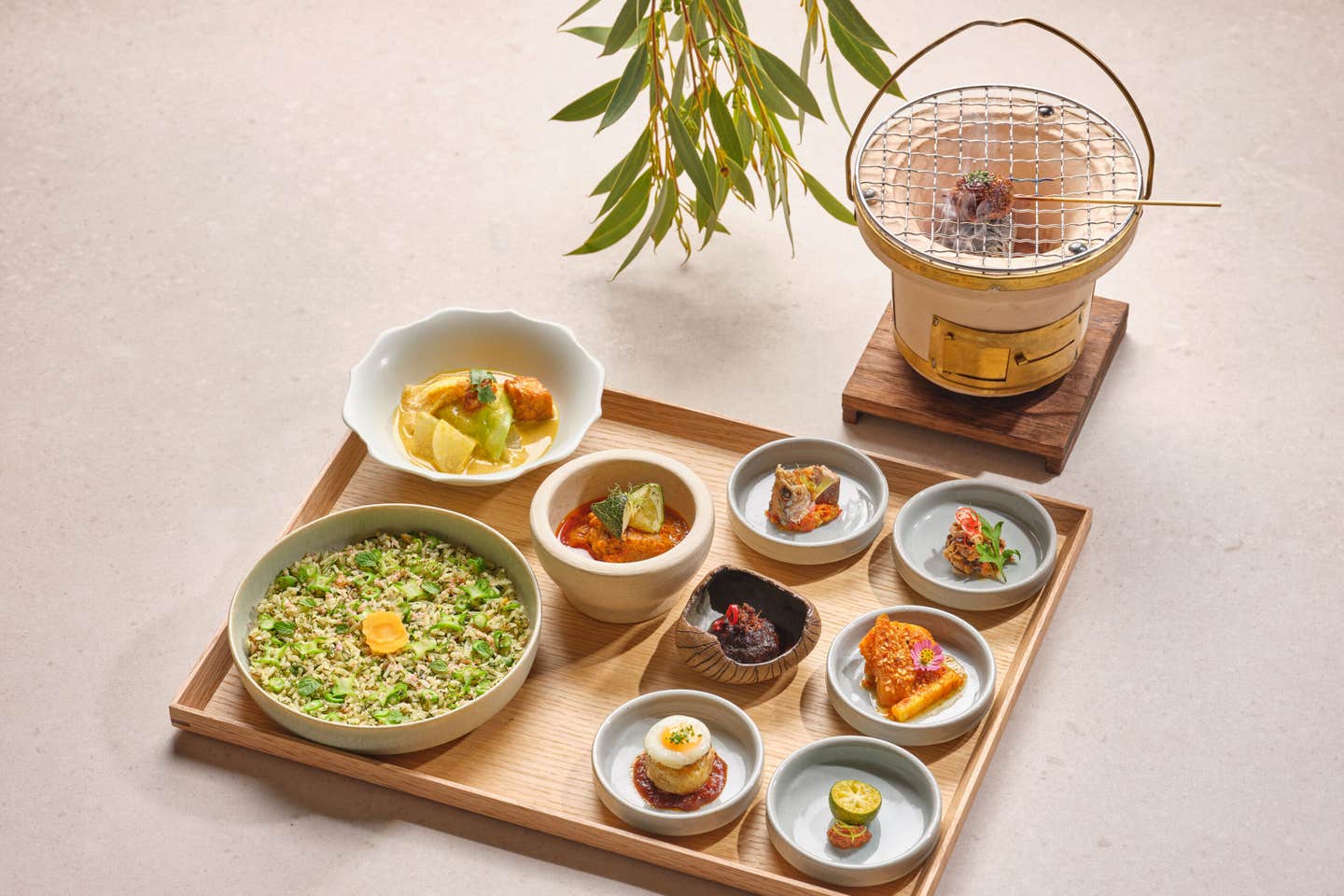
Peranakans descend from early settlers, many from Southern China, who began migrating to the Indonesian archipelago around the 14th century, where they married local women. “For me, you are a Peranakan if you can trace one of your ancestors to being an offspring of the intermarriage at that time,” says Alvin Yapp, owner and curator of the Peranakan private-home museum The Intan. In Chinese Peranakan family kitchens, Chinese cooking practices coalesced with Malay flavors into a distinct and colorful hybridized cuisine characterized by aromatic, herbaceous dishes—foods like mee siam (rice vermicelli tossed in a spicy gravy), babi pongteh (pork stew cooked with fermented soybeans), and kueh salat (glutinous rice and coconut milk topped with custard)—that were complex and time-consuming to make, but bold and hearty to eat. “Peranakan cuisine started off as home cooking,” Yapp adds, and in the home it largely remained.
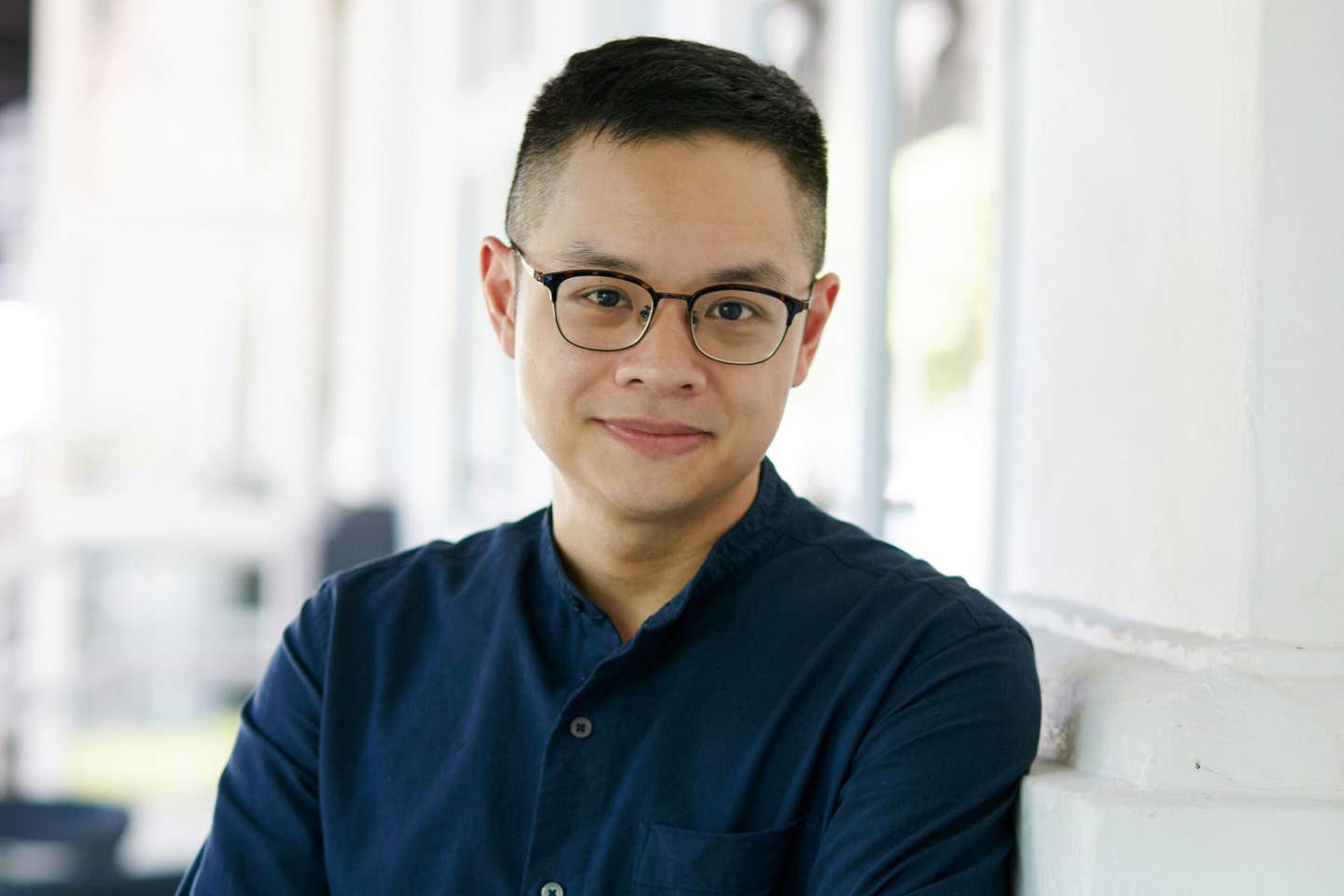
Early in his career, Lee, now 37, felt that young people—many of whom were, like him, among the third generation to build a life in Singapore—were losing touch with the culture and traditional dishes that defined their childhoods. He notes how the city-state has absorbed so much foreign influence throughout history that, for many young Singaporeans, the link to their ancestral roots can feel tenuous. “Any new nation struggles to find its identity, and to assert its identity,” says Christopher Tan, a Singaporean cookbook author of Peranakan descent. (Singapore gained independence on Aug. 9, 1965.) The Peranakan community’s matriarchs, who orchestrated large family meals with care and took great pride in their homestyle recipes, were also fading away, explains Peranakan cookbook author Sharon Wee. As young people saw their grandparents aging, “it coincides with this young generation that realizes, ‘if I don't learn how to cook this, or if I don't record this for posterity, I'm going to lose it altogether,’” she says.
In hopes of reinvigorating interest in Peranakan cuisine and heritage, Lee decided to reimagine the traditional flavors he loved. Lee’s first restaurant Candlenut, which he opened in 2010 after culinary school, had been serving Peranakan food for five years when he dreamed up a tasting menu of contemporary takes on classic dishes. The following year, Candlenut won a Michelin star, the world’s first ever awarded to a Peranakan restaurant.
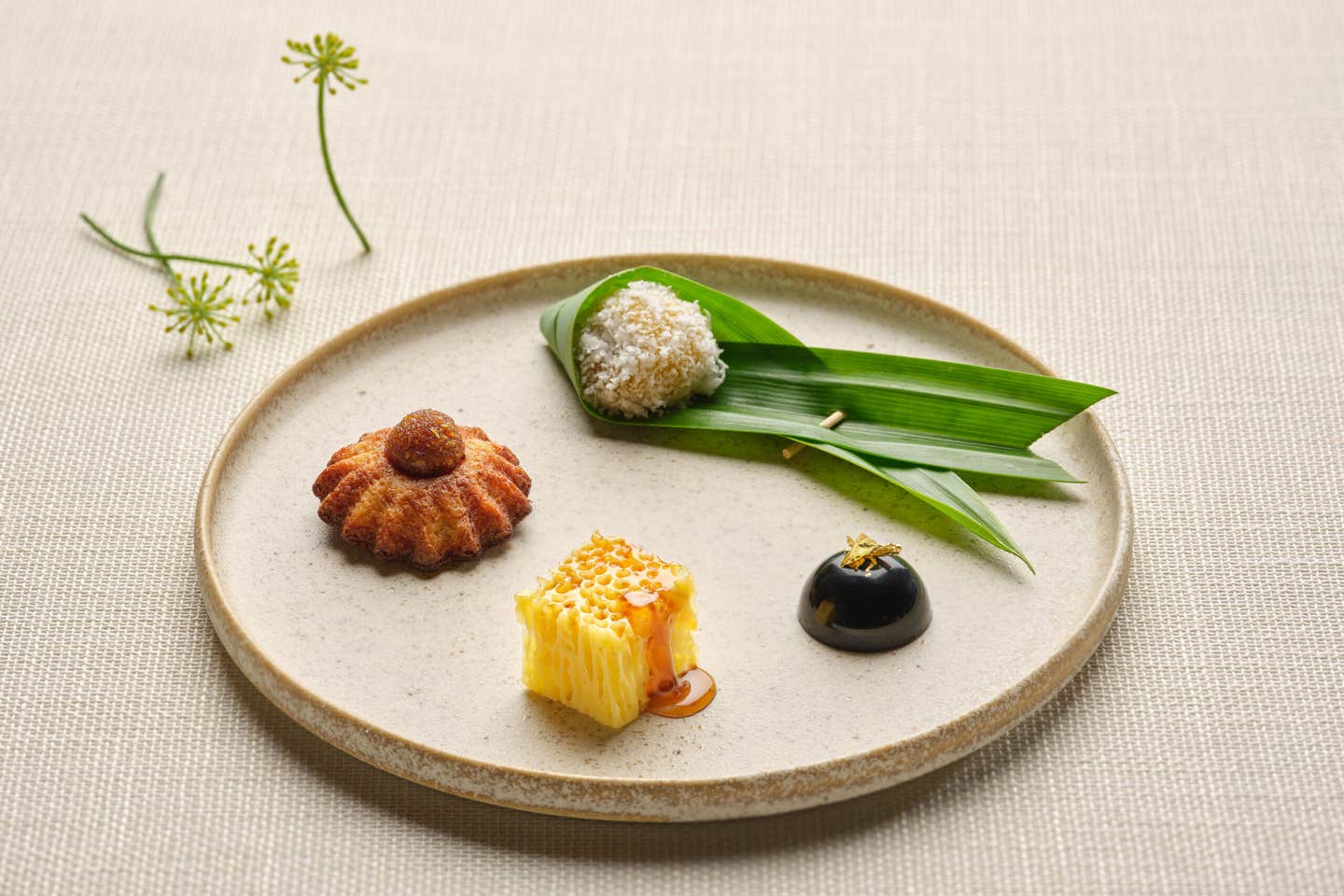
At his new sophomore endeavor Pangium, Lee’s culinary mission has broadened beyond the dishes of his Peranakan community to focus on understanding Singapore’s past and bringing it into the future. In the multicultural fabric of the country’s heritage cooking, Peranakan cuisine is only one component; Chinese, Malay, Indian, and Eurasian dishes also comprise Singapore’s heritage cooking. Though many diners may describe his new tasting menu at Pangium as innovative, Lee is more preoccupied with capturing heritage ingredients, reviving lost dishes, and showcasing them intentionally with a modern flair. “I’m trying to preserve those stories,” he explains. “The whole idea is how to present [dishes in ways] that will connect them back to the past.” On a foundation of respect for inherited tradition, Lee acknowledges the contemporary context of Singapore today. He garnishes the classic deep-fried fish dish ikan chuan chuan with hand-knotted lily buds; he serves sagun, a powdery coconut snack enjoyed by his parents’ generation but rarely seen nowadays, atop a dollop of young coconut sorbet; the nasi ulam, rice mixed with an array of herbs, arrives alongside a collection of side dishes that feature ingredients like fermented durian sambal and banana flower.
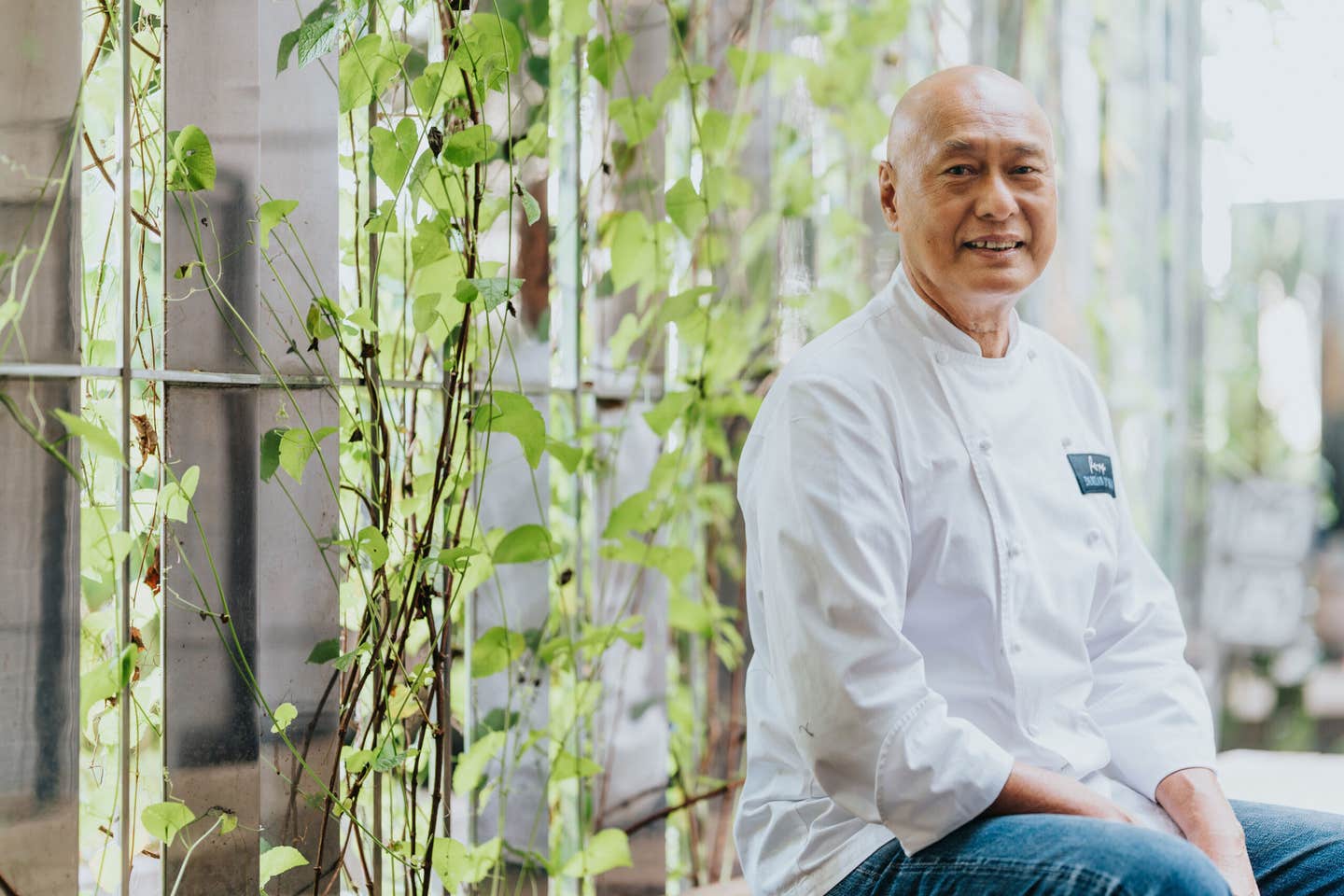
Documenting Singapore’s complex past and present is no small undertaking. Chef Damian D’Silva, the MasterChef Singapore judge who opened his latest restaurant Rempapa at the end of 2021, is among the most enthusiastic champions for upholding the vast breadth of Singapore’s heritage dishes. “If no one does that, it's going to disappear,” says D’Silva. He points out that the country, shaped by centuries of colonialism and immigration, has four official languages—English, Mandarin, Malay, and Tamil—reflecting the diversity of the demographic landscape. At Rempapa, he honors the threads that make up Singapore’s cultural tapestry by cooking a wide array of traditional dishes in homestyle fashion and serving them in family-style portions. The menu is anchored by deeply personal recipes (many from his paternal grandfather and maternal grandmother) that D’Silva, who describes his roots as Peranakan and Eurasian, once enjoyed at his childhood dinner table. He also makes space in the kitchen for other chefs to document dishes from their own heritage. A meal at Rempapa might include everything from kedondong salad (a Peranakan dish of wing beans and makrut lime leaves tossed with peanut brittle and shrimp floss) to Hakka fried pork (Chinese marinated pork belly) to baca assam (Eurasian-style beef cheeks cooked in tangy tamarind water).
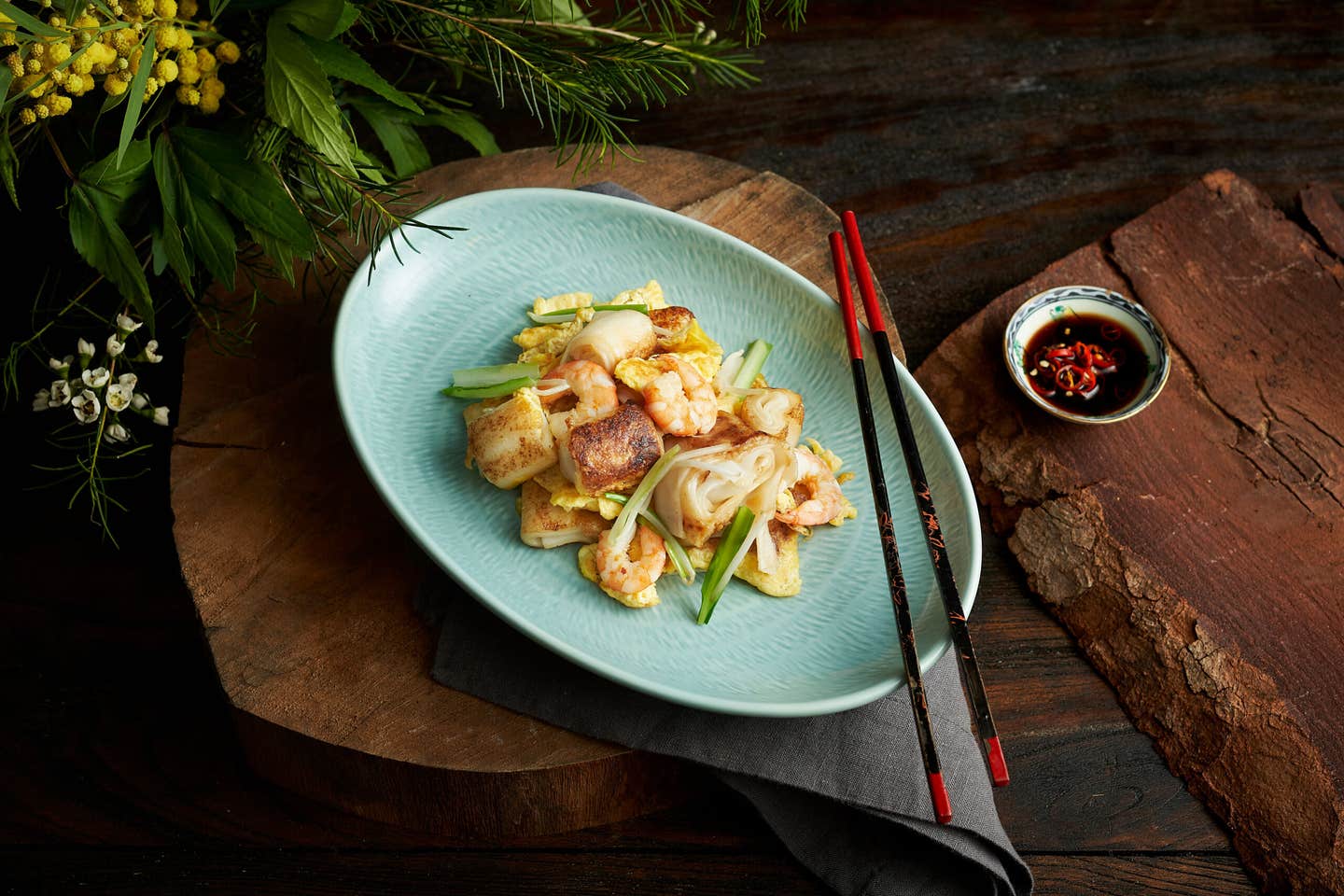
Though D’Silva supports chefs applying newfangled spins to tradition (and has introduced his own fresh takes like limpeh sliders, made with beef brisket cooked in spicy rempah), he sees himself primarily as a custodian of the history and collective memories buoying the foodways of Singapore’s many ethnic groups. He encourages cooks and eaters alike to understand and appreciate that bedrock. “If you don't do that, then you're creating a dish out of thin air,” says D’Silva. “And that, to me, makes a dish lose its soul.”
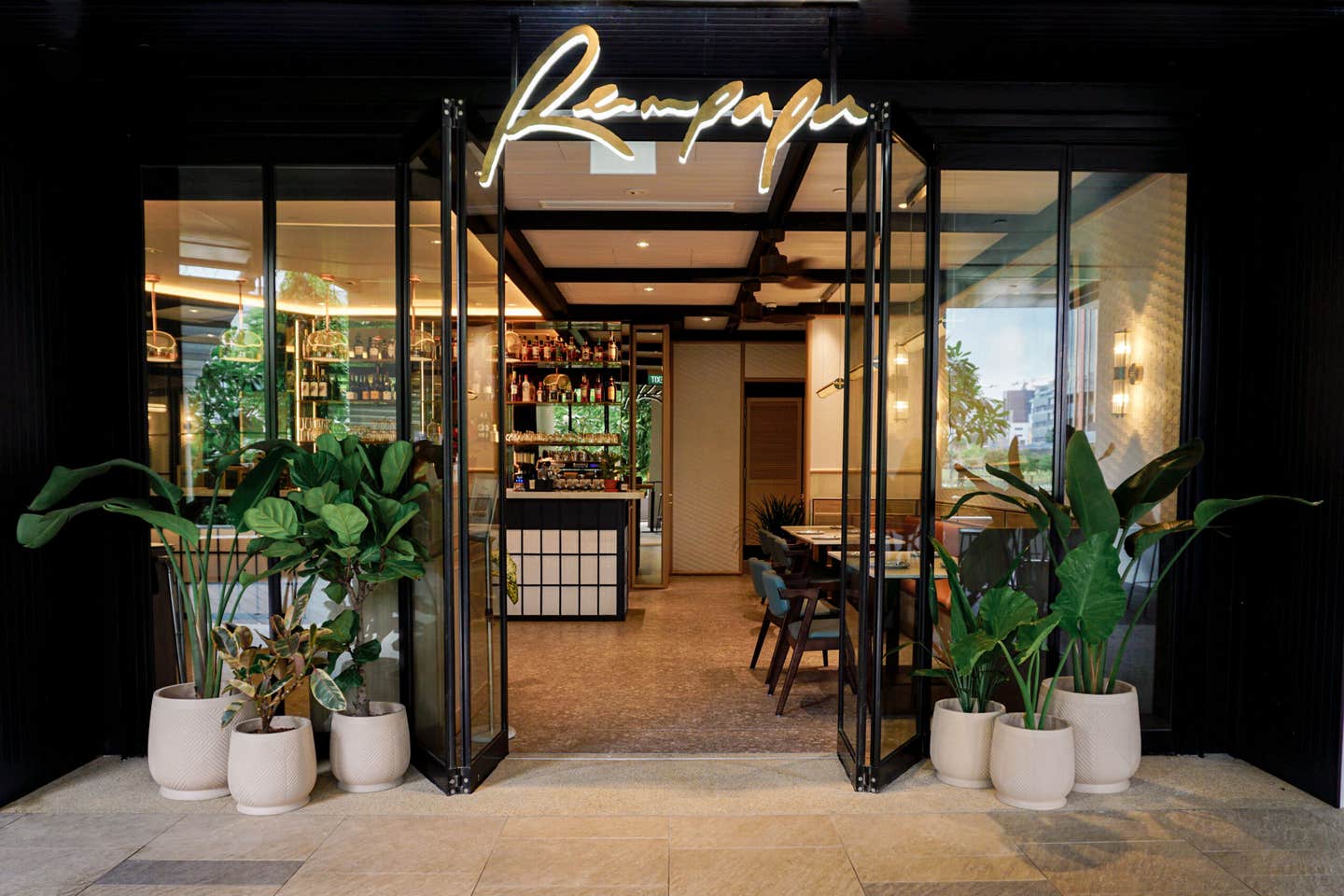
Now, a resurgence of interest in the country’s heritage cooking is well underway. “We grew up in this modernizing Singapore,” says Wee. “I think it came to a point where we realized that we weren’t quite treasuring what we had.”
The urgency of reviving and preserving these traditions is even greater knowing that the community upholding it is very small—and getting older. Though Chinese descendants make up the majority of the Peranakan community today, the group also includes the Jawi Peranakans, who descend from locally born Muslims with mixed South Asian and Malay ancestry; and the Chitty Melaka, also known as the Peranakan Indians, who descend from locally born children of South Indian merchants and Malays. To illustrate and preserve the special cultural hybridization that created Chitty Melaka food customs, Singaporean home cook Tanya Pillay-Nair is collecting recipes from her community for a cookbook that will be published in 2023.
Though many in the community no longer have direct family ties to India or Malaysia, appreciating the food of one’s heritage can maintain a poignant link to one's ancestral roots. Pillay-Nair herself has “visceral connections to the past” anchored by vivid memories of her grandmother puttering about in the kitchen, and her family sitting on the floor eating food from banana leaves. “Now that they’ve gone, I’ve had to find ways to retrieve those old recipes,” she says. “There are so many dishes that you would never have heard of,” including many that were new even to Pillay-Nair. “To me, that’s treasure.”
The pandemic had a hand in encouraging Singaporeans looking to reconnect with the dishes of their childhoods to turn to their kitchens. Limitations on restaurant visits sparked a private home-dining movement throughout the country, with countless locals opening up their own dining rooms to strangers hoping to enjoy home-cooked food in the comfort and safety of a small private group. “When you go to somebody’s house to eat, you feel the love,” says Tinoq Russell Goh, a hairstylist and makeup artist who, alongside his partner Dylan Chan, quietly launched private dinners in their home in 2020. Now, the waitlist is two years long.
As awareness of the diversity of Singapore’s heritage foods continues to build, and as chefs continue to reach diners through contemporary avenues, Yapp, for one, is curious and excited to see where the reinvention will lead. “I don't think culture should be stuck in time,” he says, pointing out that the Peranakan cuisine of his own background was born from applying modern ingredients and presentation to existing traditions.
One of Lee’s proudest creations is Candlenut’s signature ice cream made from the hydrogen cyanide-containing poisonous seed of the indigenous buah keluak tree (also known as Pangium edule). Making it edible is a lengthy process that involves boiling, burying, and fermenting it before extracting the pasty filling, which Lee’s ancestors thought would work well with chicken and pork. But for Lee, “it’s almost like dark chocolate. A bit bitter, like rich coffee, slightly acidic.” He wondered if it might shine in a dessert. Now, the dish has been on Candlenut’s menu for nine years, served on a bed of salted caramel and embellished with chocolate espuma.
“That's truly Peranakan,” says Yapp. “We are not afraid to try new things.”
Keep Reading
Continue to Next Story







